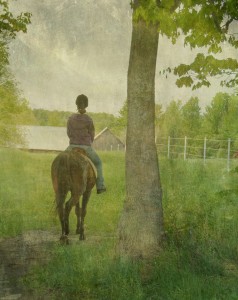This is part 4 of The Roots of Photography e-book, based on the book The Photographer’s Eye by John Szarkowski. It is about what makes photography unique in the art world.
Time: The Decisive Moment
Every photograph represents a discrete moment in time – the present moment as experienced by the photographer. What makes this so amazing is that the number of potential shots is infinite, as scenes and subjects are constantly changing.
There is always something new under the sun.
For an understanding of this concept, take a look at my blog post on contemplative photography (see Additional Resources), especially the video clip from the movie “Smoke,” with Harvey Keitel. He plays Auggie Wren, a cigar store owner, who has taken a picture every day at eight a.m. from the same corner in New York City. While all the pictures seem to look the same at first glance, a more careful viewing shows that each one is different, capturing a single moment in time.
There is a pleasure and beauty in this fragmenting of time that had little to do with what was happening. It had to do with seeing the momentary patterning of lines and shapes that had been previously concealed within the flux of movement. ~ The Photographer’s Eye, John Szarkowski
 The image to your right reminds me of a day spent with my sister and her twin daughters as they cared for their two horses. Here, my niece Nicole was taking one of the horses for a ride to get some exercise. I loved seeing her ride off into the field and snapped this shot to capture the moment. It is one of so many potential shots that could have been taken that day to express what I saw and felt.
The image to your right reminds me of a day spent with my sister and her twin daughters as they cared for their two horses. Here, my niece Nicole was taking one of the horses for a ride to get some exercise. I loved seeing her ride off into the field and snapped this shot to capture the moment. It is one of so many potential shots that could have been taken that day to express what I saw and felt.
Reflection
How aware are you of the changing shapes, lines, and patterns in each moment? Is photography a practice that helps you to be more present? What practices could you incorporate that would allow you to capture the decisive moment?
Exercises
Here are 5 ways to use photography to explore the concept of time.
1. Take a picture of the same subject every day at the same time for one week. Examine your seven shots and see the subtle differences between them.
2. Take several shots in a row of a moving scene, i.e. people running, a bird flying, cars passing by. Examine your shots to see how scenes change constantly.
3. Take a long exposure of a moving subject. The resulting blur will show the passage of time.
4. Try some street photography. Learn more about street photography through the additional resources.
5. Explore the work of other photographers, especially Henri Cartier-Bresson, master of the decisive moment.
Additional Resources
Street Photography with Eric Kim
10 Things Henri Cartier-Bresson Can Teach You About Street Photography by Eric Kim
Learning to See and the movie “Smoke” by Kim Manley Ort

Love your “Freddies” shot. On first glance, I was attracted to the bright red lights and didn’t even notice the waitress until my second look.